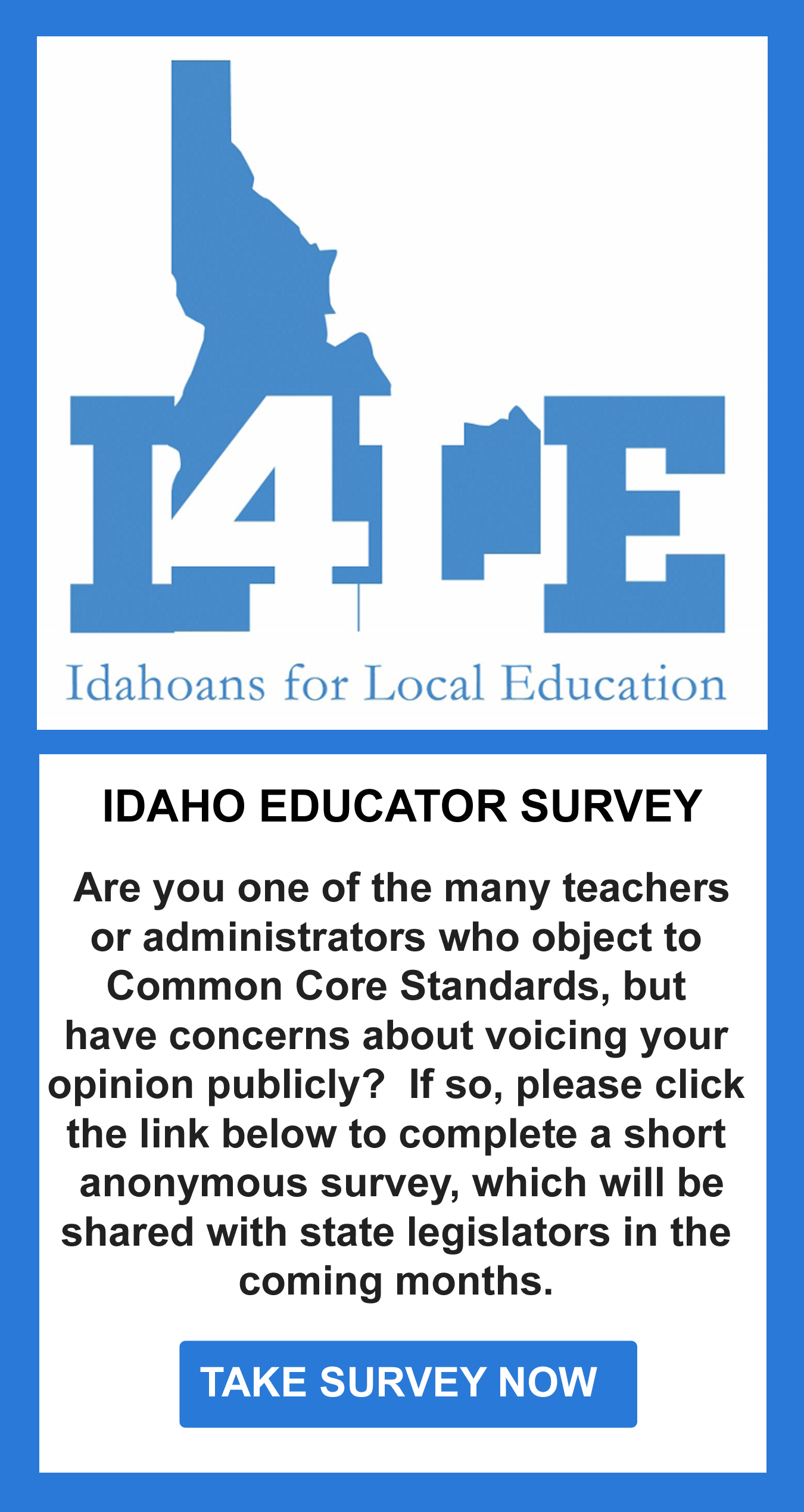The Truth Behind the Myths
The Idaho State Department of Education(SDOE) has put out a series of Myths. What they claim to be myths are not myths at all. We will examine the truths behind what they call myths, and ask you to do your own research. Our research is based on reading the documents that our state has written and signed. Let’s work together to hold our representatives, Governor, Superintendent and others who support the Common Core accountable. Educate yourself, and then write and call and ask them to explain themselves and support their claims with evidence. We say prove it!
The SDOE claims that the federal government has not required Idaho to adopt Common Core State Standards.
They insist that this is a state-led process. The evidence of this state-led process is a Memorandum of Agreement. The Council of Chief State School Officers and The National Governors Association Center for Best Practices Common Core standards Memorandum of Agreement. These are two organizations that Idaho pays to be a part of. They receive much more of their funding from private sources. These two organizations did not start to work on common standards until they received private funds granted for this purpose. Their directive came from the private funders, not from Tom Luna and the other superintendents. If it was state-led where are the Idaho working documents? Where are the red-lined copies from our local educators, parents and teachers? Where is the evidence of any meaningful input from any Idaho representative? How did Idaho affect any of the Standards that currently will impact our children for years to come? Belonging to the organization that owns the copyrights does not qualify as a state-led initiative.
The federal government has been involved with every agreement that led to Common Core. President Obama announced 4.35 billion of Stimulus funds were available to be awarded to states through Race To the Top Grants. States were required to submit an application in order to qualify for the Race to the Top competitive grant program. On January 13, 2010, Governor Otter and other state officials signed an application to apply for these federal funds. With this application Idaho officials agreed to adopt a common set of K-12 standards. We further agreed to join a consortium of states “working to develop and adopt a common set of K-12 standards and high quality assessments aligned with the consortium’s common set of standards” ¹ These standards and the consortium were necessary to qualify for points that equated to federal dollars. It was very difficult to qualify for a grant without these qualifying points. In this way states were coerced into adopting these standards and joining a consortium. Our state officials must have felt that federal funds were worth accepting federal strings.
Idaho joined The Smarter Balanced Assessment Consortium (SBAC). This organization fulfilled our obligation to the federal government to work with other states in aligning our assessments. The governance document for the SBAC tied us to oversight by the US. Department of Education. To join we had to be approved by the USED (US. Department of Education).² To Exit the Consortium we have to receive consortium and USED approval.³
Even more alarming is the Cooperative Agreement Idaho leaders accepted with the Department of Education as part of the SBAC. This agreement with the SBAC and the U.S. Department of Education requires even further oversight. The details of our agreement are explained in detail in the Cooperative Agreement Between the U.S. Department of Education and the Smarter Balanced Assessment Consortium and the State of Washington Article II Project Management Plan.4 One of the most alarming details of the agreement is the mandate to run all decisions by an employee of the USED. This employee is referred to as a Program Officer. They have the final say over how our Idaho State assessment testing will be written and implemented. “5) The Program Officer will review and approve modifications to the design of activities proposed under this Agreement. Any recipient requests for changes shall be submitted in writing directly to the Program Officer. Requests are not approved until the grantee has received authorization and notification in writing from the Program Officer”.5 The program officer is a U.S. Department of Education employee, not a locally elected, held accountable individual. Idaho students will now be tested according to these Common Standards, only after the federal employee has verified our tests as acceptable. Why did Idaho officials give away our states’ rights to a program officer?
1 Race to the Top Executive summary B. Standards and Assessments,http://www2.ed.gov/programs/racetothetop/executive-summary.pdf p.7
2 “Upon approval of the request, the Project Management Partner will then submit to the USED for approval.” Smarter Balanced Assessment Consortium governance Structure Document, http://www.smarterbalanced.org/wordpress/wp-content/uploads/2012/02/Smarter-Balanced-Governance.pdf
3 “B. Exit from the Consortium 5. Upon approval of the request, the Project Management Partner will then submit a change of membership to the USED for approval.” Smarter Balanced Assessment Consortium Governance Structure Document, http://www.smarterbalanced.org/wordpress/wp-content/uploads/2012/02/Smarter-Balanced-Governance.pdf
4 Cooperative Agreement Between the U.S. Department of Education and the Smarter Balanced Assessment Consortium and the State of Washington Article II A. Recipient’s Responsibilities,http://www2.ed.gov/programs/racetothetop-assessment/sbac-cooperative-agreement.pdf (January 7, 2011)
5 Cooperative Agreement Between the U.S. Department of Education and the Smarter Balanced Assessment Consortium and the State of Washington Article II A. Recipient’s Responsibilities pg.3-4, http://www2.ed.gov/programs/racetothetop-assessment/sbac-cooperative-agreement.pdf




